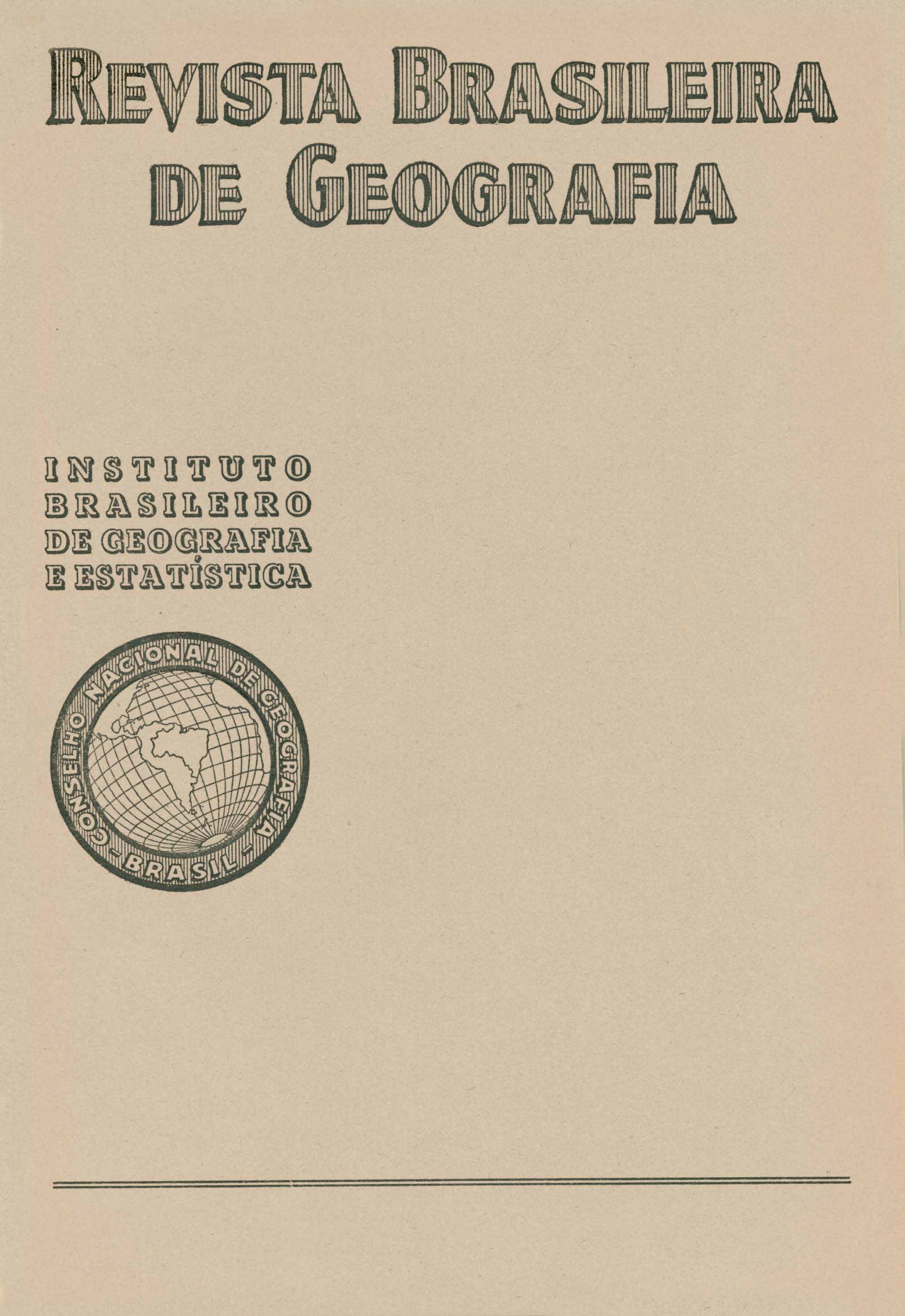Divisão regional do Vale do São Francisco
Keywords:
Divisões territoriais e administrativas;, Geografia econômica;, Geologia;, Climatologia;, Vale do São Francisco.Abstract
The present article which is chiefly a result from data collected on an excursion covers, as its heading shows it, the regional division of S. Francisco Valley, as well as the characterization and subdivision of each of the composing regions.
Thus, surveys were made on the valley, from the Geologic and Paleographic, Geomorphologic, Climatologic, Phythogeographic and Economic and Human Geography standpoints, and the corresponding elementary regions are presented.
Tn the last chapter a synthesis is made on geog1aphic regions in the valley, which are as many as four in number, namely: lower S F1ancisco, region of rapids, middle S. Francisco, and upper S. Francisco, which' have the following as their respective dominant features: rainfall distribution, the semi-aridity, the navigation, and the high river course.
The regions are each summarily described in the following manner:
Lower S. Francisco, from its mouth up to Itaparica; characteristics: low fluvial course, little relief, rice production, navigation. Subdivisions: delta, from the sea until below Neópolis; characteristics: quaternary plain of deltaic formation, annual precipitations between 1 100 and 1 200 mm, economic capital – Piaçabuçu: Flat district of the lower S. Francisco, from Neópolis to Propriá; characteristics: tertiary plain, gently rolling (lower S Francisco series), extensive 1ice cultivation, more developed traffic on the river. Lower S Francisco hilly district, from Propriá until Marechal Floriano; characteristics: Crystalline complex, hilly relief Waterfall district, from Marechal Floriano to Itaparica; characteristics: "chapadas" (flat lands) of cretaceous arenito, annual rainfall between 500 and 1 000 mm; maize, bean, castor seeds, palms, sugar cane, and "ouricury" growing, barter with lower S. Francisco.
Rapids region, from Itaparica as far as Juazeiro; characteristics: crystalline peneplains, semi-arid climate, "caatinga" (thorn or scrub forest), poor navigable stream, encircled economy, scarce means of communication.
Middle S. Francisco region, from Juazeiro up to Pirapora; characteristics: Silurian and quaternary formations predominance, relief in tubular "chapadões" (flat-topped mountains), isolated lirlly remnants or monadnocks, rainfall between 500 and 800 mm yearly, navigation, transhumance. It subdivides as: zone of dunes, from Mucambo do Vento as far as Pilão Arcado; characteristics: "erg", psammitic vegetation, poo1 and scarcely inhabited, "caroá" (fibre). District of the "caatingas" of the middle S. Francisco, from Juazeiro up to the counties of Manga and S. Francisco; cha1acte1istics: "caatinga", alluvial low lands limited east and west by "chapadões" annual rainfall between 500 and 800 mm, many low tide cultures, Zone of the perennial river branches, from Manga and S. Francisco to Pirapora; characteristics: limestone elevations. "Bambuy" and "Urucuia" arenito, annual rainfall above 800 mm, dense woods; cotton, sugar cane and castor seed growing, cattle raising.
Upper S. Francisco region, f1om Pirapora as far as the stream source. Characteristics: silurian and cretaceous formations, high fluvial course.






